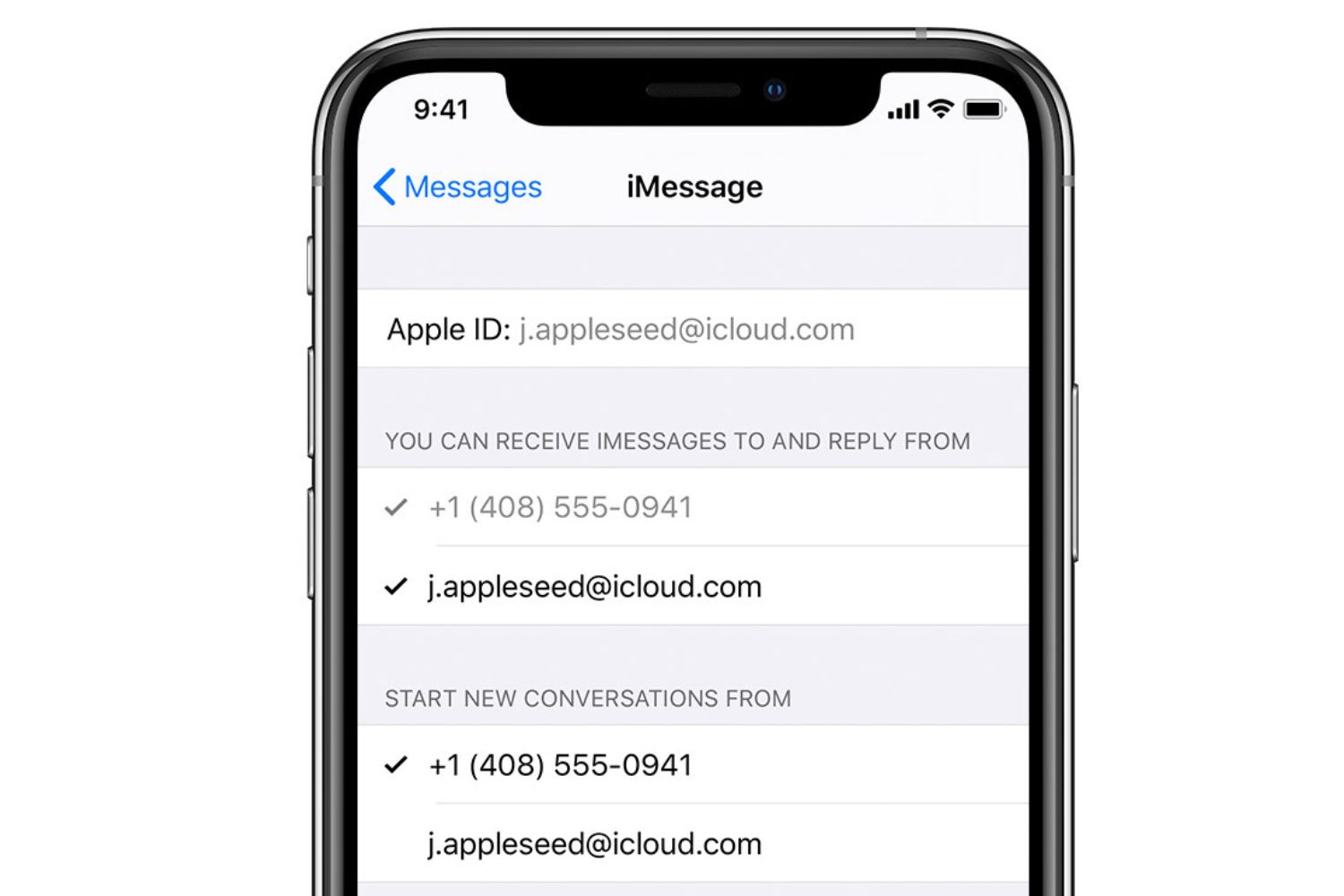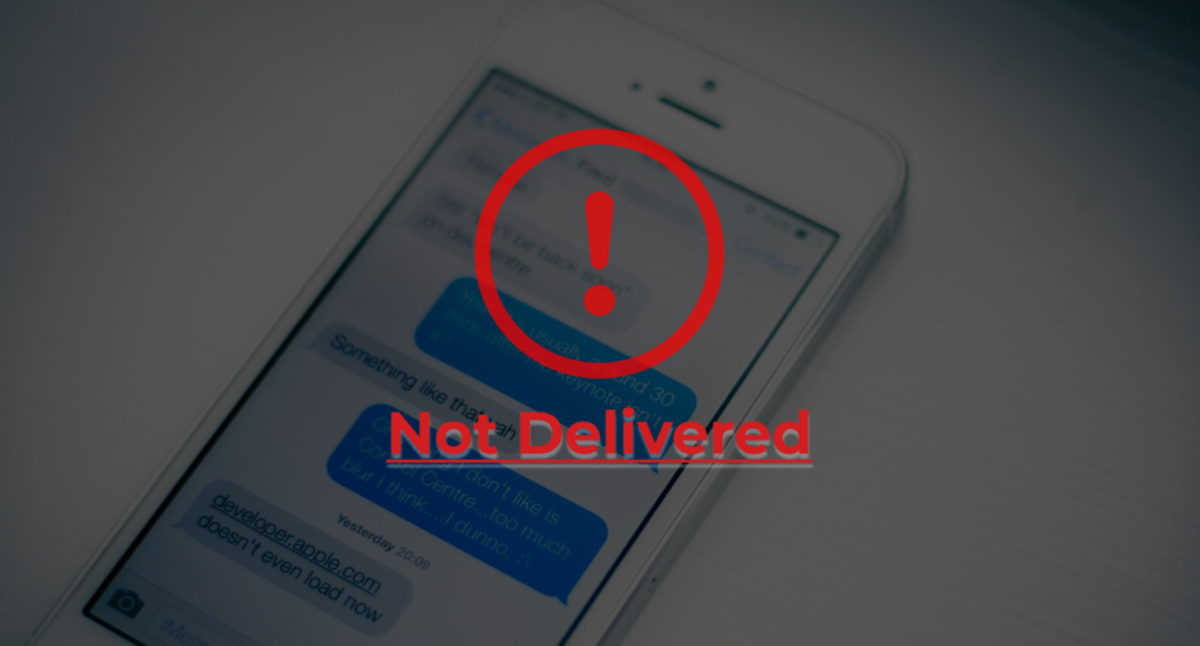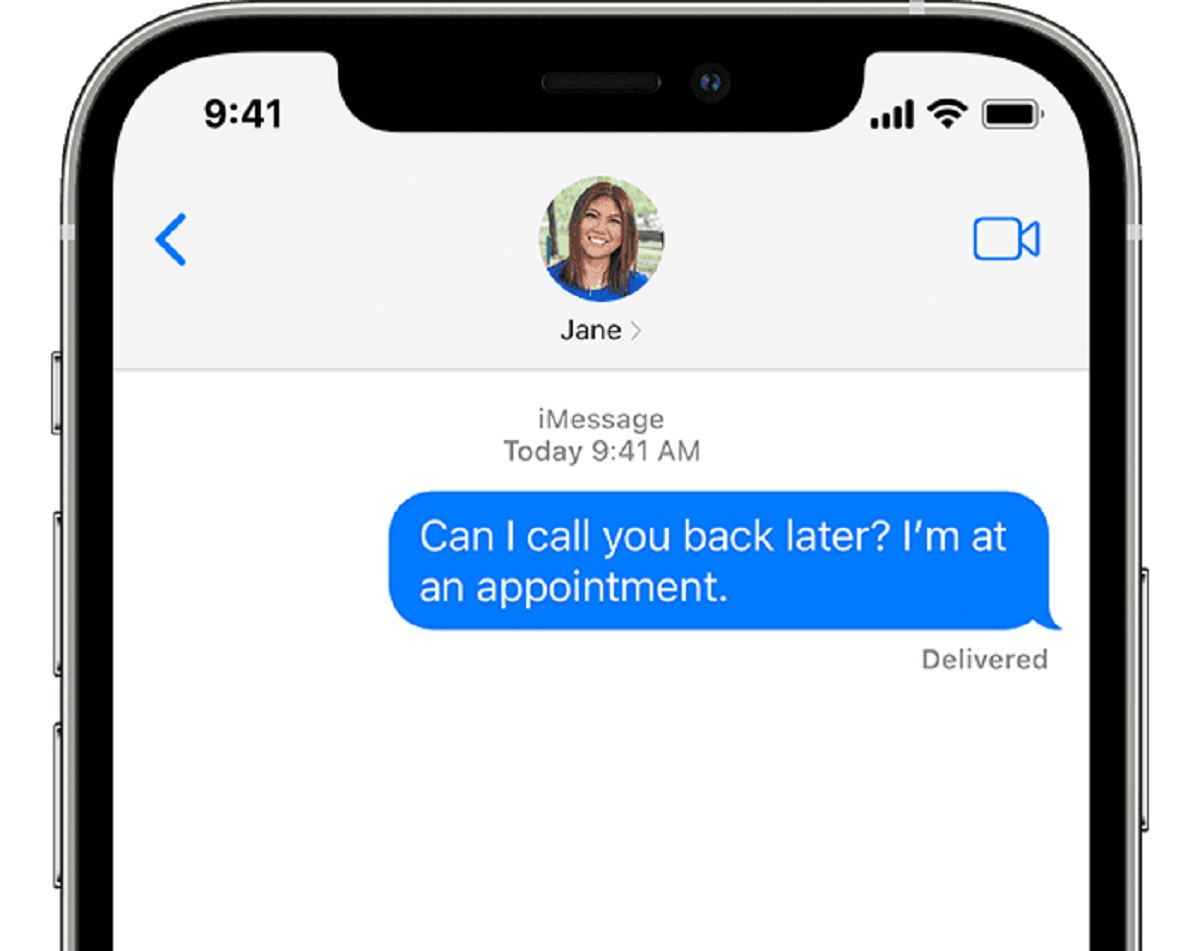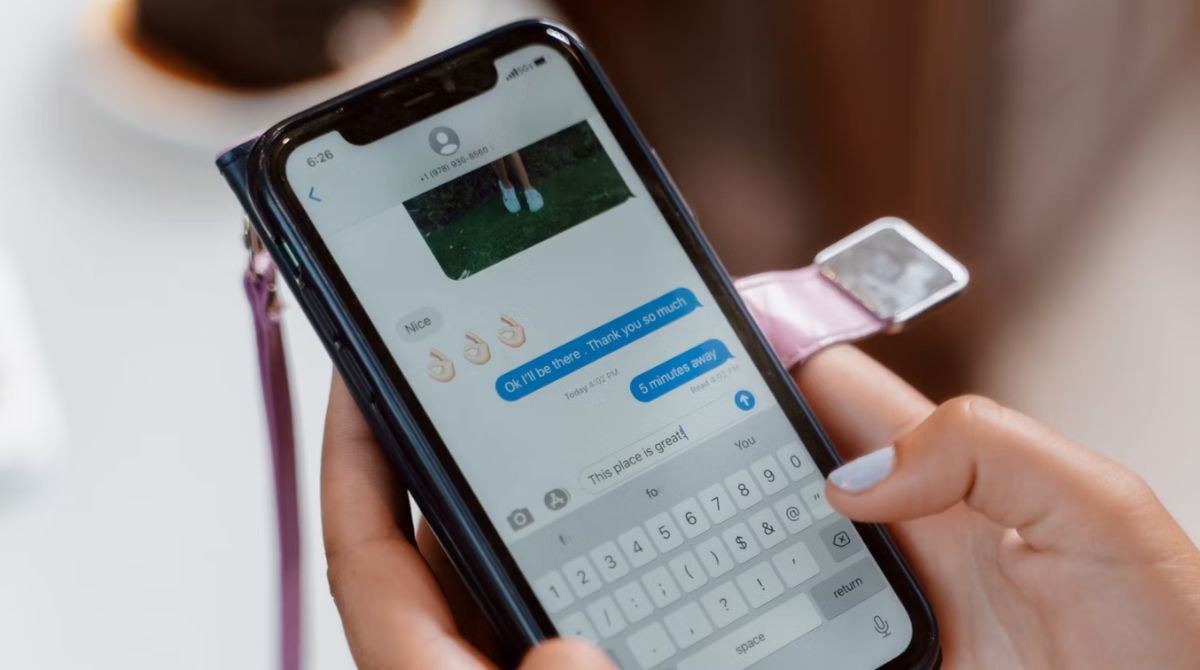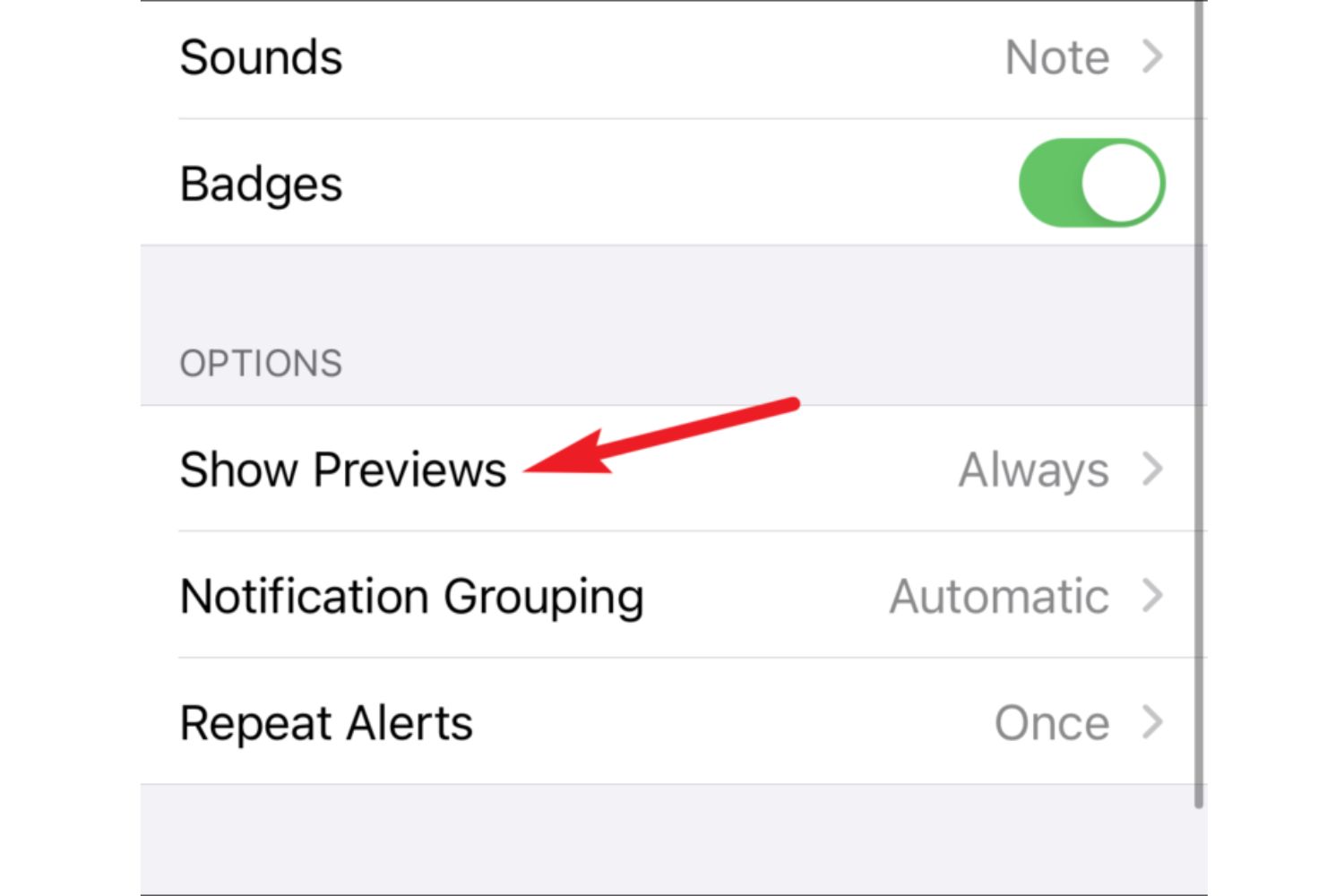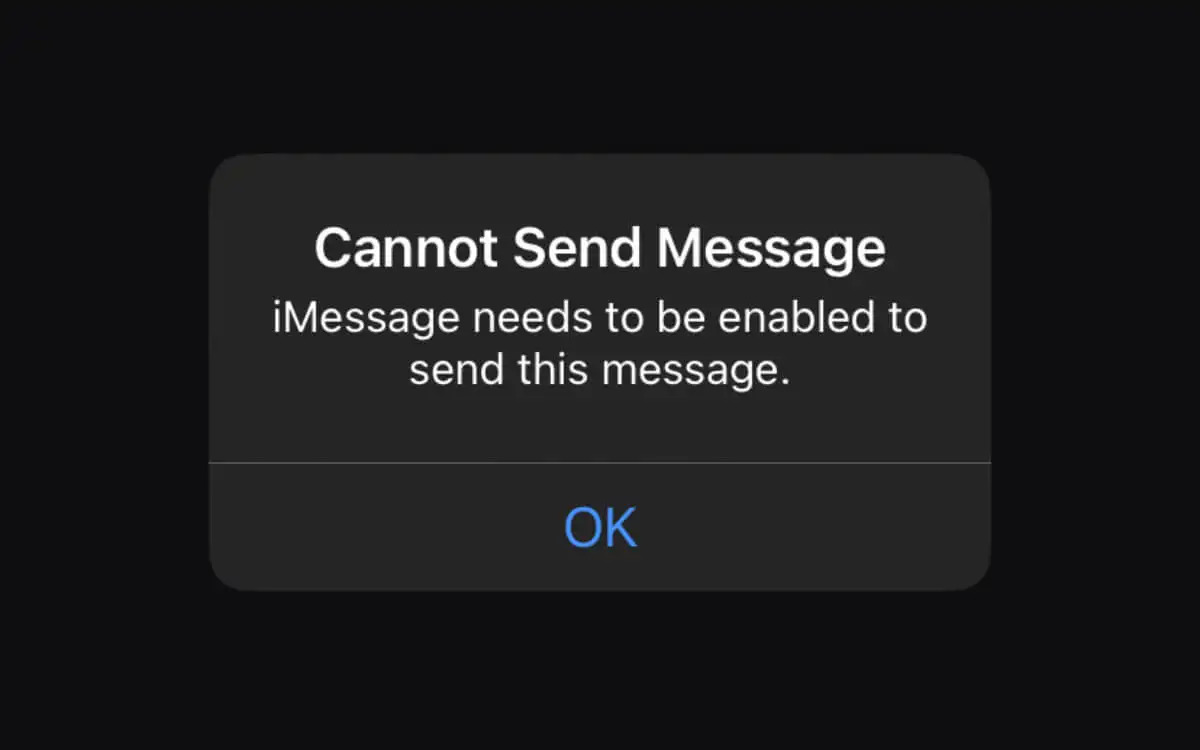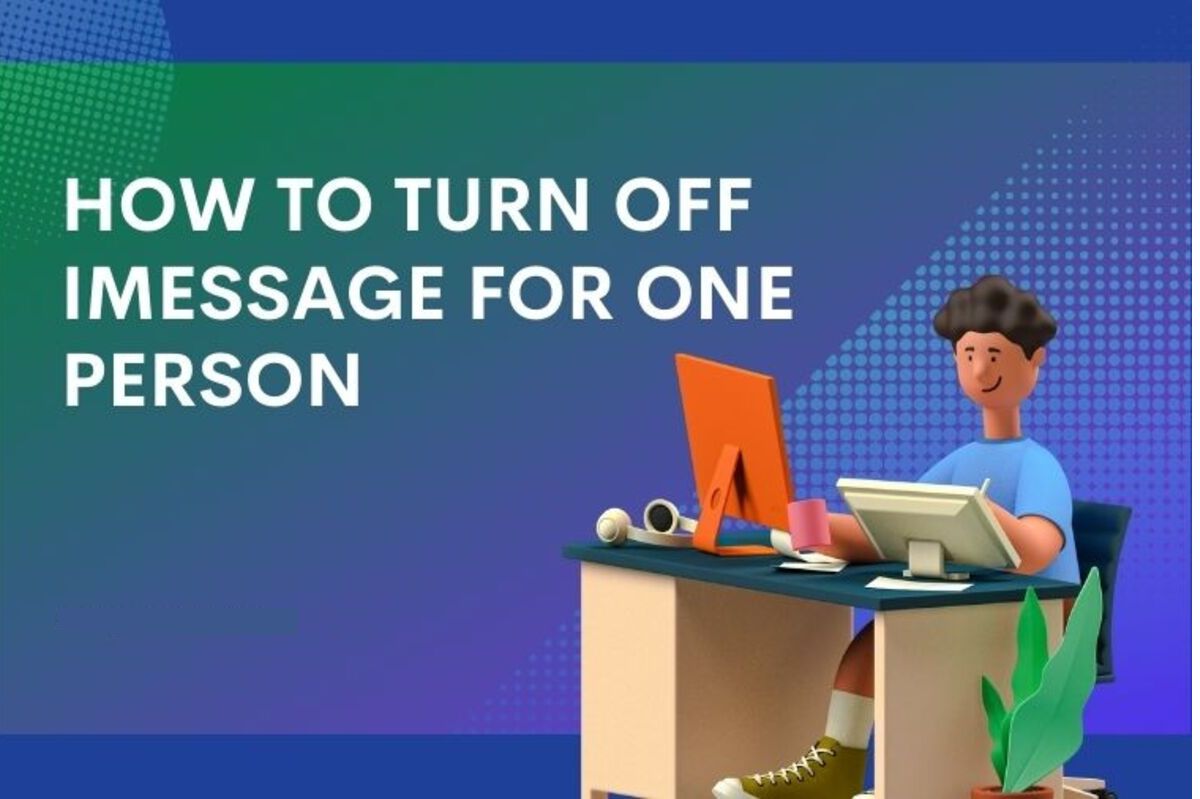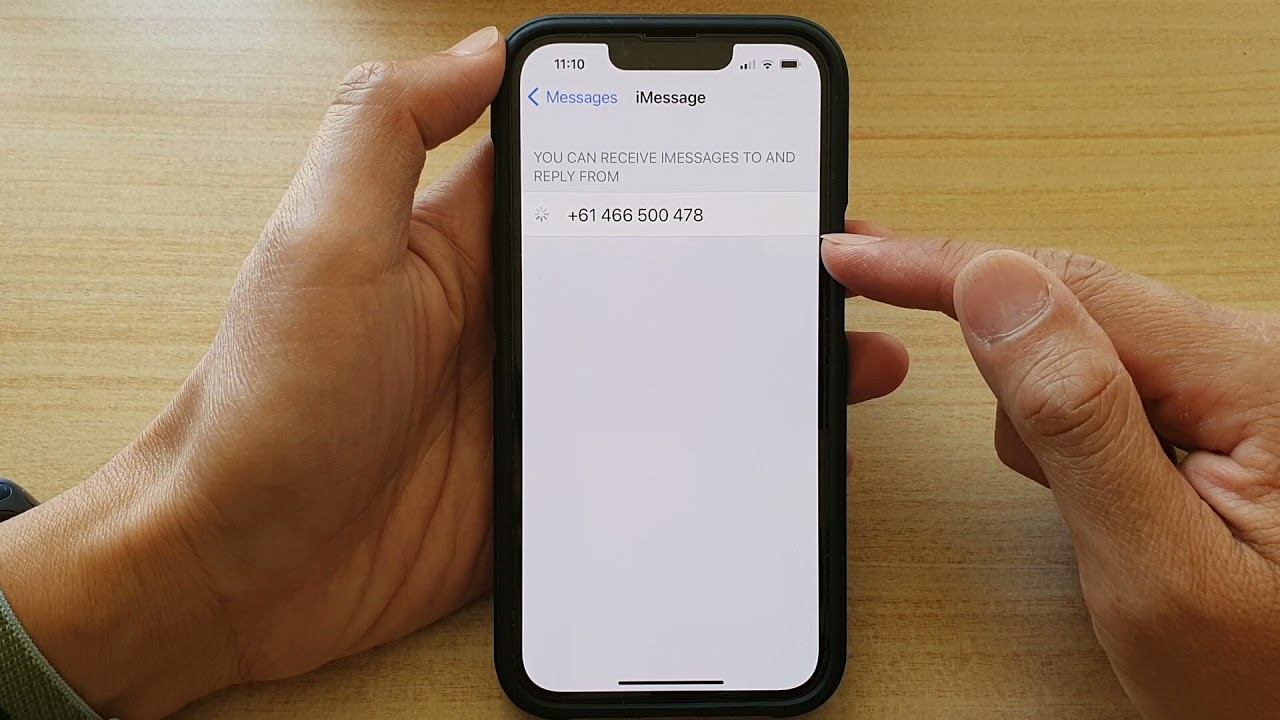Possible Reasons Why Your Phone Number Won’t Connect to iMessage
If you’re facing trouble connecting your phone number to iMessage, don’t panic. There could be several reasons behind this issue, and understanding them can help you resolve it quickly. Here are some possible reasons why you are experiencing difficulty connecting your phone number to iMessage:
- Incomplete Activation Process: It is essential to complete the activation process for iMessage on your device. Ensure that you have entered the correct Apple ID and password to activate iMessage successfully.
- Incorrect Date and Time Settings: Incorrect date and time settings on your device can cause synchronization issues, which may prevent iMessage from connecting to your phone number. Double-check and adjust the date and time settings to resolve this problem.
- Insufficient Network or Wi-Fi Connection: A weak network or Wi-Fi connection can hinder the activation of iMessage. Make sure you have a stable internet connection before attempting to connect your phone number.
- An Apple Server Issue: At times, Apple’s servers may experience temporary issues that affect the activation of iMessage. Checking Apple’s System Status page can help you determine if there are any server problems.
- Invalid Apple ID or Phone Settings: Verify that your Apple ID and phone settings are accurate and up-to-date. Incorrect settings can prevent iMessage from connecting your phone number.
- Issues with iOS Update or Software Glitch: Updating your device to the latest iOS version can resolve software-related glitches that may interfere with iMessage activation.
- Conflict with SIM Card or Carrier Settings: Ensure that your SIM card is inserted correctly and your carrier settings are properly configured on your device. Check with your carrier for any restrictions or known issues with iMessage.
- Compatibility Issues with the Phone Model: Older iPhone models may not support the latest iMessage features. If you have an older device, it is worth checking if your phone is compatible with the version of iMessage you are trying to connect to.
- Activation Lock Enabled on the Phone: If your device has Activation Lock enabled, it can prevent iMessage activation. Disable Activation Lock by going to “Settings” and navigating to “Apple ID > iCloud > Find My iPhone.”
- Issues with Apple ID Verification: Verify that you have completed the Apple ID verification process. Failure to do so can prevent iMessage from connecting to your phone number.
- Outdated Software Version: If your device is running on an outdated software version, it could lead to compatibility issues with iMessage. Update your device’s software to the latest version available.
- Incorrect Regional Settings on the Device: Ensure that the region or country settings on your device are correctly configured. iMessage may not connect to your phone number if the regional settings do not align with your current location.
- Network Restrictions by Carrier: Some carriers impose restrictions on iMessage usage. Contact your carrier to confirm if there are any specific settings or limitations that need to be adjusted to enable iMessage.
By considering these possible reasons, you can troubleshoot and resolve the issue preventing your phone number from connecting to iMessage. If you continue to experience problems, it may be beneficial to reach out to Apple Support for further assistance.
Incomplete Activation Process
If you’re having trouble connecting your phone number to iMessage, one possible reason could be an incomplete activation process. It is crucial to ensure that you have completed the necessary steps to activate iMessage on your device.
The first step in the activation process is to enter your Apple ID and password. Double-check that you have entered your credentials correctly and that they match the Apple ID associated with your device. Any errors or typos can prevent the successful activation of iMessage.
Once you have entered your Apple ID and password, proceed with the activation process. If you recently created a new Apple ID, it may take some time for the activation to be completed. Patience is key during this process, and it is advisable to wait for a while before attempting to connect your phone number to iMessage.
In some cases, your device may prompt you to verify your Apple ID via email or another method. Make sure to follow the verification process, as failure to do so can prevent the activation of iMessage. Check your email inbox associated with your Apple ID and follow the provided instructions for verification.
If you have previously used iMessage on another device and are now trying to connect your phone number to a new device, there may be additional steps to complete. For example, if you switched from an old iPhone to a new one, ensure that you have signed out of iMessage on your old device before attempting to activate iMessage on the new device.
If you have followed all the necessary steps but are still experiencing issues with the activation process, it is recommended to restart your device and try again. Sometimes, a simple reboot can resolve temporary glitches or conflicts that may be preventing successful activation.
Remember, patience and attention to detail are crucial when dealing with the activation process for iMessage. By ensuring that you complete all the necessary steps accurately, you can increase the chances of successfully connecting your phone number to iMessage.
Incorrect Date and Time Settings
Another possible reason why your phone number may not be connecting to iMessage is due to incorrect date and time settings on your device. It is important to ensure that your device’s date and time are accurately configured to avoid synchronization issues.
When your device’s date and time are incorrect, it can cause conflicts with the iMessage server, leading to connectivity problems. To resolve this issue, go to your device’s settings and navigate to “Date & Time.” Make sure the option to “Set Automatically” is enabled. This allows your device to automatically synchronize with the correct date and time based on your location and network.
If the “Set Automatically” option is already enabled and you’re still experiencing issues, try disabling it temporarily and then enabling it again. This action can trigger a fresh synchronization attempt and address any minor glitches that may be affecting the connectivity of iMessage.
In some cases, manually setting the date and time can resolve the issue. Ensure that the date, time, and time zone are accurate for your current location. If you have recently traveled to a different time zone, it is important to update the settings accordingly to maintain proper synchronization with the iMessage server.
Additionally, check if your device has switched to the 24-hour clock format. Sometimes, this change can lead to compatibility issues with iMessage. Switching back to the 12-hour clock format may resolve the problem and allow your phone number to connect to iMessage.
Remember to periodically check your device’s date and time settings to ensure they remain accurate. Some devices automatically update the date and time when connected to a network, but it’s always a good idea to verify this information to prevent any connectivity issues with iMessage.
By ensuring that your device’s date and time settings are correct, you can eliminate synchronization conflicts and improve the chances of successfully connecting your phone number to iMessage.
Insufficient Network or Wi-Fi Connection
If your phone number isn’t connecting to iMessage, one possible reason could be an insufficient network or Wi-Fi connection. iMessage relies on a stable and reliable internet connection to function properly, so it’s essential to ensure that your device is connected to a strong network signal or a stable Wi-Fi network.
Start by checking your network signal strength. If you are in an area with poor reception or low signal strength, it can hinder the activation of iMessage. Try moving to a location with better network coverage, such as an open space or closer to a window, to improve the signal strength and facilitate the connection process.
In the case of a Wi-Fi connection, make sure that you are connected to a stable and reliable network. Double-check the Wi-Fi password and confirm that you have entered it correctly. If you are using a public Wi-Fi network, it’s possible that the network provider has restrictions or limitations that may be interfering with iMessage. Consider connecting to a different Wi-Fi network or contacting the network administrator for assistance.
It’s also worth rebooting your Wi-Fi router or modem to refresh the connection. Turn it off for a few seconds and then turn it back on. This action can help to resolve any temporary router or network issues that may be affecting iMessage connectivity.
If you’re unable to connect to a Wi-Fi network, you can try using your cellular data connection instead. However, keep in mind that using cellular data for iMessage may result in additional charges, depending on your data plan and carrier. Make sure you are aware of any potential data charges before proceeding.
If you have confirmed that your network or Wi-Fi connection is strong and stable, but you still can’t connect your phone number to iMessage, try toggling the airplane mode on and off. This action can force your device to reconnect to the network and may resolve any connectivity issues that are preventing iMessage activation.
By ensuring that you have a reliable network or Wi-Fi connection, you can improve the chances of successfully connecting your phone number to iMessage. If you continue to experience issues, consider contacting your network provider for further assistance.
An Apple Server Issue
If you’re experiencing difficulty connecting your phone number to iMessage, it’s possible that the issue lies with Apple’s servers. Apple’s servers are responsible for handling the activation and synchronization of iMessage, and if they are experiencing temporary problems, it may prevent your phone number from connecting.
To check if there is an Apple server issue, you can visit Apple’s System Status page. The System Status page provides real-time information about the status of various Apple services, including iMessage. If there is a server issue, it will be displayed on this page. Keep in mind that server issues usually occur on a temporary basis, and Apple’s engineers work quickly to resolve them.
If you discover that there is indeed an Apple server issue affecting iMessage activation, all you can do is wait until the problem is resolved on their end. While this can be frustrating, it’s essential to be patient as these issues are typically resolved within a short period.
In the meantime, you can check Apple’s Support Communities or social media platforms to see if other users are experiencing similar issues. This can provide you with some reassurance that the problem is not specific to your device and that Apple is aware of the situation.
If the server issue persists for an extended period or you believe it is not a widespread problem, you can contact Apple Support for further assistance. They have the expertise to help troubleshoot the issue and may be able to provide additional guidance or solutions to resolve the problem.
Remember, server issues are not within your control, and patience is key when dealing with them. By staying informed about any Apple server issues and following their updates, you can ensure that your phone number connects to iMessage once the servers are back up and running smoothly.
Invalid Apple ID or Phone Settings
If your phone number is not connecting to iMessage, one possible reason could be invalid Apple ID or phone settings. It is crucial to ensure that both your Apple ID and your phone are configured correctly to allow for iMessage activation.
Start by verifying that you are using the correct Apple ID on your device. On iOS devices, go to “Settings” and select your Apple ID at the top of the screen. Confirm that the displayed Apple ID matches the one associated with your account. If it doesn’t, sign out and sign in again with the correct Apple ID.
Additionally, check your phone settings to ensure that you have enabled iMessage on your device. Go to “Settings” and select “Messages.” Make sure the toggle switch next to iMessage is turned on. If it’s already on, try turning it off and then back on again to refresh the connection.
Another aspect to check is your iCloud settings. iMessage uses iCloud for seamless integration across your devices. Go to “Settings,” select your Apple ID, and then tap “iCloud.” Verify that your iCloud account is signed in and that the “Messages” option is enabled under the iCloud settings. If it’s not enabled, activate it and see if it resolves the issue.
If you recently changed your Apple ID password, make sure to update it on your device. An outdated or incorrect password can prevent iMessage from connecting to your phone number. Go to “Settings,” select your Apple ID, and tap “Password & Security” to update your password if necessary.
It’s also important to check for any restrictions or limitations set on your device that may interfere with iMessage. Go to “Settings” and select “Screen Time.” Under the “Content & Privacy Restrictions” option, ensure that iMessage is allowed and not restricted.
Lastly, verify that your device’s software is up to date. An outdated software version can sometimes cause compatibility issues with iMessage. Go to “Settings,” select “General,” and tap “Software Update.” If an update is available, install it and check if it resolves the problem.
By ensuring that your Apple ID and phone settings are valid and correctly configured, you can increase the likelihood of successfully connecting your phone number to iMessage.
Issues with iOS Update or Software Glitch
If your phone number isn’t connecting to iMessage, there may be issues related to the iOS update or software glitches on your device. It’s important to ensure that your device’s software is up to date and functioning properly to resolve these issues.
Start by checking if there is an iOS update available for your device. Apple regularly releases software updates that include bug fixes and improvements, which can address issues with iMessage. Go to “Settings,” select “General,” and tap “Software Update.” If an update is available, install it to ensure your device’s software is optimized for iMessage.
In addition to keeping your software up to date, it’s recommended to restart your device. This simple action can help resolve minor software glitches that may be preventing your phone number from connecting to iMessage. Press and hold the power button, and then slide to power off. Wait a few seconds before turning your device back on.
If restarting your device doesn’t resolve the issue, you can try resetting your device’s network settings. Sometimes, incorrect network settings or network-related glitches can interfere with iMessage connectivity. To do this, go to “Settings,” select “General,” and tap “Reset.” Then, choose “Reset Network Settings.” Keep in mind that this action will remove your saved Wi-Fi passwords, so make sure to have them readily available to reconnect to Wi-Fi networks.
If the problem persists, consider disabling and re-enabling iMessage on your device. Go to “Settings,” select “Messages,” and toggle off the switch next to iMessage. After a few seconds, toggle it back on. This action can force iMessage to refresh its connection and resolve any software-related issues.
In some cases, a more severe software glitch may require a restore of your device. Before attempting this, make sure you have a recent backup of your device’s data, as restoring it will erase all content and settings. You can perform a restore through iTunes or using the “Erase All Content and Settings” option in the device’s settings. It’s advisable to seek guidance from Apple Support or visit an Apple Store if you are unsure about performing a restore.
By ensuring your device has the latest iOS update installed, restarting it, resetting network settings if necessary, and disabling/re-enabling iMessage, you can address iOS update or software glitch issues that may be preventing your phone number from connecting to iMessage.
Conflict with SIM Card or Carrier Settings
If your phone number is not connecting to iMessage, there may be a conflict with your SIM card or carrier settings. It’s important to ensure that your SIM card is properly inserted and that your carrier settings are correctly configured on your device.
Start by checking if your SIM card is inserted correctly. Turn off your device and locate the SIM card slot. Remove the SIM card, inspect it for any damage or debris, and reinsert it securely into the slot. It’s recommended to consult your device’s user manual for specific instructions on how to insert the SIM card properly.
After confirming that the SIM card is inserted correctly, check your carrier settings on your device. Go to “Settings,” select “General,” and tap “About.” If there is an available carrier update prompted, install it to ensure that your device has the latest carrier settings.
If you recently switched to a new SIM card or a new carrier, it’s possible that there are specific settings or restrictions that need to be adjusted for iMessage to work properly. Contact your carrier’s customer support to confirm if there are any specific settings required or if there are known issues with iMessage on their network.
It’s also worth checking if there are any network restrictions imposed by your carrier. Some carriers may have specific settings or limitations that affect iMessage usage, such as requiring a separate data plan or specific messaging packages. Contact your carrier to inquire about any applicable restrictions and ensure that your account is set up correctly.
If you have recently switched carriers or transferred your phone number, it’s possible that the transfer process is still in progress, which can prevent iMessage from connecting. Contact your new carrier to verify the status of the transfer and inquire if any additional steps need to be taken to activate iMessage with your phone number.
If you suspect that the issue lies with your SIM card, carrier settings, or any restrictions imposed by your carrier, it’s advisable to contact your carrier’s customer support for further assistance. They can help troubleshoot the issue and provide you with specific guidance based on your carrier and device model.
By ensuring that your SIM card is inserted correctly and your carrier settings are properly configured, you can eliminate potential conflicts and improve the chances of successfully connecting your phone number to iMessage.
Compatibility Issues with the Phone Model
If you’re having trouble connecting your phone number to iMessage, it’s possible that there are compatibility issues with your phone model. iMessage may have specific requirements or features that are not supported by older or incompatible devices.
Start by checking the compatibility of your phone model with the version of iMessage you are trying to connect to. Some older iPhone models may not support the latest iMessage features or require specific iOS versions. You can visit the Apple website or consult the documentation for your phone model to verify its compatibility with iMessage.
If your phone model is compatible with iMessage, it’s recommended to ensure that your device is running on the latest iOS version. Apple regularly releases updates that include bug fixes and improvements that can enhance the compatibility of iMessage with different phone models. Go to “Settings,” select “General,” and tap “Software Update” to check for and install any available updates.
In some cases, restoring your device to its original factory settings can resolve compatibility issues. Before doing so, ensure that you have a recent backup of your device’s data, as restoring will erase all content and settings. You can perform a restore through iTunes or using the “Erase All Content and Settings” option in the device’s settings. If you’re unsure about performing a restore, consider reaching out to Apple Support or visiting an Apple Store for assistance.
It’s also worth checking if there are any known issues or specific settings that need to be adjusted for your particular phone model. You can visit Apple Support Communities or search online forums to see if other users have experienced similar compatibility issues with your phone model and if there are any recommended solutions or workarounds.
If you’ve exhausted all options and your phone model is not compatible with iMessage, you may need to consider alternative communication methods or upgrading to a newer device that supports iMessage. While this may involve additional costs, it ensures that you can take full advantage of iMessage’s features.
By checking the compatibility of your phone model, ensuring it’s running the latest iOS version, and researching any specific issues related to your device, you can address compatibility issues that may be preventing your phone number from connecting to iMessage.
Activation Lock Enabled on the Phone
If your phone number is not connecting to iMessage, it’s crucial to check if the Activation Lock is enabled on your device. Activation Lock is a security feature that prevents unauthorized users from activating a device without the owner’s Apple ID and password. While Activation Lock provides an extra layer of protection, it can also interfere with iMessage activation if it’s enabled.
To check if Activation Lock is enabled on your phone, go to “Settings” and select “Apple ID.” Next, tap on “Find My” and navigate to “Find My iPhone.” If the toggle switch next to “Find My iPhone” is turned on, it indicates that Activation Lock is enabled.
If Activation Lock is enabled, you will need to disable it by entering your Apple ID and password. Go back to “Settings,” select “Apple ID,” and tap “Find My.” Then, select “Find My iPhone” and enter your Apple ID and password to turn off Activation Lock.
If you have forgotten your Apple ID or password, you’ll need to follow the account recovery process to regain access to your account. Visit the Apple ID account recovery website or contact Apple Support for assistance.
It’s important to note that disabling Activation Lock requires an internet connection. Ensure that your device is connected to Wi-Fi or cellular data before attempting to disable it.
Once Activation Lock is disabled, try connecting your phone number to iMessage again. If other issues persist, such as incomplete activation or incorrect settings, refer to the respective sections and address those concerns accordingly.
Remember, Activation Lock is a security feature that helps protect your device and personal information. It’s essential to keep track of your Apple ID and password and enable Activation Lock on your device for enhanced security. However, if needed, following the necessary steps to disable Activation Lock can help resolve issues with iMessage activation.
Issues with Apple ID Verification
If you’re facing difficulties connecting your phone number to iMessage, one possible reason could be issues with Apple ID verification. Proper verification of your Apple ID is essential for the successful activation of iMessage on your device.
Start by confirming that you have completed the Apple ID verification process. When setting up your Apple ID, you may have received a verification email or a verification code to validate your identity. Check your email inbox associated with your Apple ID and follow the provided instructions to complete the verification process.
If you haven’t received the verification email, check your spam or junk folder. Sometimes, the email may be filtered into one of those folders. Ensure that you have entered the correct email address when creating your Apple ID, as an incorrect email address can prevent the verification email from reaching you.
If you haven’t received the verification code, you can request a new one. On your device, go to “Settings,” select your Apple ID, tap on “Password & Security,” and then tap on “Resend Verification Email” or “Get Verification Code.” Follow the provided instructions to receive a new verification code and complete the verification process.
If you are still unable to verify your Apple ID despite repeated attempts, it’s recommended to contact Apple Support for assistance. They can guide you through the verification process, provide additional troubleshooting steps, or offer solutions tailored to your specific situation.
In some cases, your Apple ID may be temporarily locked or disabled due to security reasons. This can happen if there have been multiple unsuccessful login attempts or if Apple detects suspicious activity on your account. If you suspect that your Apple ID is locked, visit the Apple ID account recovery website or contact Apple Support for further assistance.
By ensuring that your Apple ID is properly verified, you can increase the chances of successfully connecting your phone number to iMessage. It’s important to follow the necessary steps and seek assistance from Apple Support if you encounter any difficulties during the verification process.
Outdated Software Version
If your phone number is not connecting to iMessage, it’s important to consider whether you are using an outdated software version on your device. Outdated software can cause compatibility issues with iMessage and prevent it from functioning correctly.
To check if your device is running on the latest software version, go to “Settings,” select “General,” and tap on “Software Update.” If an update is available, download and install it to ensure your device is up to date.
Software updates often include bug fixes, security improvements, and enhancements to app performance, including iMessage. Therefore, keeping your device’s software updated can potentially resolve any compatibility issues with iMessage.
If you are unable to update your device’s software due to hardware limitations or other reasons, check if there are any specific requirements for iMessage on the version of software you are currently using. Verify if your device meets those requirements to ensure compatibility.
In some cases, a software update may not be available for older devices that are no longer supported by the latest iOS version. If your device is not compatible with the latest iOS version, it may not have access to the latest iMessage features. However, basic iMessage functionality should still be available on older software versions.
If you have confirmed that your device is already running the latest software version and you are still experiencing issues connecting your phone number to iMessage, refer to the other sections mentioned earlier to troubleshoot and address other potential causes for the problem.
Remember, keeping your device’s software updated ensures that you have access to the latest features, improvements, and bug fixes, including those related to iMessage. It’s always recommended to stay up to date with software updates to enjoy optimal performance and compatibility.
Incorrect Regional Settings on the Device
If your phone number is not connecting to iMessage, it’s worth checking if the regional settings on your device are configured correctly. Incorrect regional settings can affect various aspects of your device’s functionality, including iMessage.
To check your regional settings, go to “Settings” and select “General.” From there, tap on “Language & Region” or “Region” depending on your device. Verify that the selected region or country matches your current location.
iMessage relies on the correct regional settings to determine the phone number format and compatibility with carrier networks. If the regional settings on your device are incorrect, it can lead to issues with iMessage activation and connectivity.
If you recently traveled to a different country or changed your device’s region settings, it’s important to update the regional settings accordingly. Mismatched regional settings can prevent iMessage from connecting your phone number.
It’s also worth checking if the language settings on your device are correctly set. While language and regional settings are often closely related, incorrect language settings can sometimes affect iMessage activation. Ensure that the selected language is accurate and aligned with your preferences.
If you find that the regional settings on your device are incorrect, change them to reflect your current location. Restart your device and try connecting your phone number to iMessage again. This action allows the updated regional settings to take effect.
Keep in mind that changing the region settings may have implications for other aspects of your device, such as date and time format, currency, and language settings. Therefore, it’s essential to review and update all relevant settings to ensure a seamless experience.
If you have confirmed that the regional settings on your device are correct, but you are still experiencing issues connecting your phone number to iMessage, refer to the other sections mentioned earlier to troubleshoot and address other potential causes for the problem.
By ensuring that your regional settings accurately reflect your current location, you can eliminate potential compatibility issues and improve the chances of successfully connecting your phone number to iMessage.
Network Restrictions by Carrier
If your phone number is not connecting to iMessage, it’s important to consider whether there are network restrictions imposed by your carrier. Some carriers may have specific settings or limitations that can affect the usage and connectivity of iMessage.
Start by contacting your carrier’s customer support to inquire about any network restrictions related to iMessage. They can provide you with valuable information about any specific settings or limitations that need to be adjusted to enable iMessage on your device.
It’s possible that your carrier requires you to have a specific data plan or messaging package in order to use iMessage. Ensure that you have the appropriate subscription or add-on activated on your account to utilize iMessage without any limitations.
Some carriers may also have network restrictions that block or limit certain internet-based services, including iMessage, to conserve data usage or comply with specific regulations. Contact your carrier to confirm if there are any network restrictions imposed on iMessage and if there are any workarounds or adjustments that can be made.
If your carrier has confirmed that there are no restrictions or limitations on iMessage, but you continue to experience issues, it’s advisable to perform some troubleshooting steps on your device.
Try toggling the iMessage option off and on under the “Settings” menu. This can refresh the connection to your carrier’s network and may resolve any temporary glitches affecting iMessage activation.
Additionally, you can try resetting your network settings on your device. Go to “Settings,” select “General,” and tap on “Reset.” Then, choose “Reset Network Settings.” Keep in mind that this action will remove saved Wi-Fi passwords, so make sure to have them readily available to reconnect to Wi-Fi networks.
If the problem persists, consider contacting your carrier’s customer support again to escalate the issue or seek further assistance. They may be able to provide more specific troubleshooting steps or escalate the matter to their technical support team for further investigation.
It’s important to note that resolving network restrictions by carrier requires cooperation between you and your carrier. By understanding the limitations and adjusting your settings accordingly, you can potentially resolve the connectivity issues with iMessage and enjoy seamless communication.







